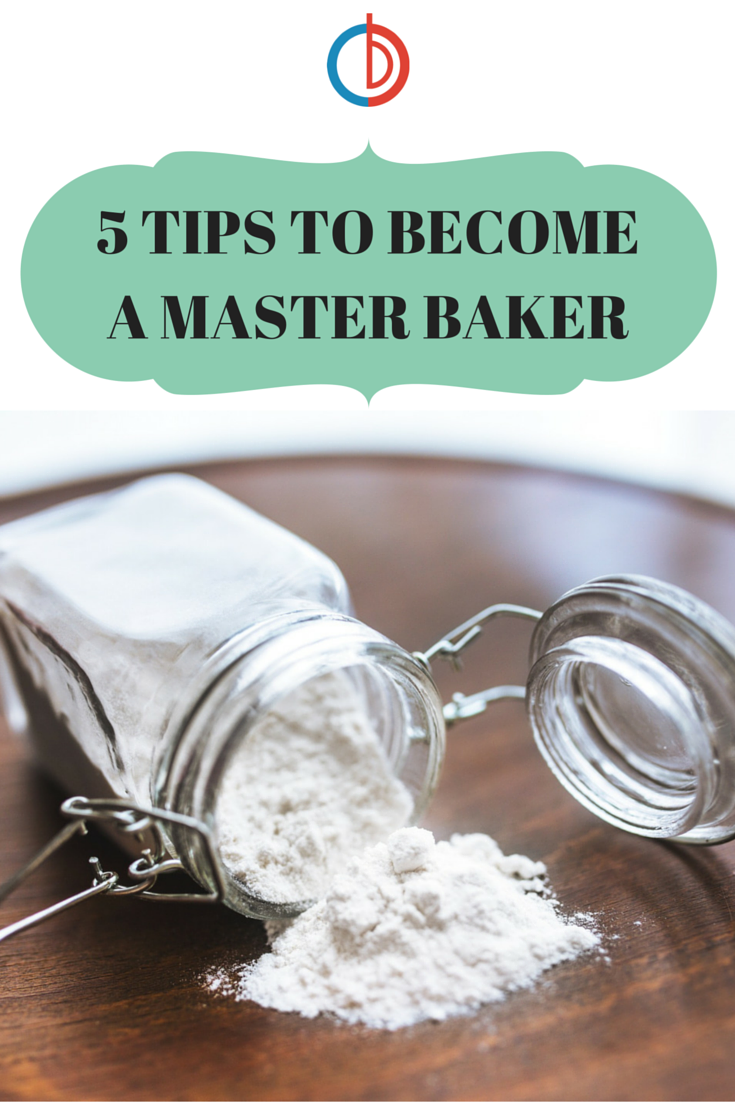Autumn has arrived, and what better way is there to stay warm in cold weather than with the warm scent of cinnamon apple pie wafting from the oven? In this first part of our two part series we’ll show you 5 tips to become a master baker in no time at all! Once you’ve mastered these tips, tune in to Part 2 where we’ll show you how to make the most of one of autumn’s favorite baking fruits, the humble apple.
#1 Use Fall Ingredients
This one is a no-brainer. Fall is here, and that means you should choose ingredients that resonate with the season of autumn—apples, cinnamon, gingerbread, and pumpkin are among some of the most popular around this time of year. Use ingredients like spices and cloves. Nothing says autumn like a wholesome slice of pumpkin pie topped with whipped cream right after Thanksgiving dinner or a pan full of apple crisp fresh out of the oven. Fruits and vegetables always taste best when they are ripest and in season, that’s why a surefire way to improve your baking in the fall is to stick to fresh ingredients. Try to source them locally for best results.
#2 Invest in a Quality Bakeware Set
While you could choose to continue improvise with that one pan your apartment’s previous tenants left behind in the oven, your life will be made a whole lot easier if you invest in a set of quality bakeware. Non-stick, dishwasher safe bakeware is easier to clean and maintain, what’s more you’ll gain access to a whole suite of new baking recipes that require specific sizes of pans or types of trays. Typical bakeware sets may include the following:
- Rectangular Cake Pan
- Round Cake Pan
- Loaf Pan
- Cookie Sheet
- 6-12 Cup Muffin Pan
From pies to brownies and cupcakes, having a full assortment of bakeware is a must if you want to be ready for any baking occasion
#3 Use an Electric Stand Mixer
With all the baking you will likely be doing this fall/holiday season, give your arms a rest by investing in an electric stand mixer. Baking is both an art and a science, but it’s the science part that makes mixing rates such a crucial component in baking recipes. Besides the obvious part about uniformly mixing your ingredients together, mixing is also performed to develop the gluten within the dough. When you mix water and flour, the proteins glutenin and gliadin are crosslinked together to form gluten, the elastic substance that plays a major role in the final structure of your baked goods. The longer you mix something, the more crosslinks are formed, and the tougher your eventual baked goods. While you don’t have to be a scientist to make amazing baked goods, this is why it’s important to follow recipes to a T—if a specific mixing rate is called for in a recipe, a stand mixer can help give you the precision you need to bring your baked goods to life.
#4 Weigh your Ingredients with a Digital Scale
Speaking of precision, it’s probably time to graduate from measuring your ingredients in cups to grams and pick up a kitchen scale. Measuring ingredients like flour by volume, can lead to as much as a five ounce variance—much too high for the precision required to follow some recipes. It’s generally a better practice to know exactly how much mass you’re putting into your baking. This will help you keep detailed records on exactly what ratios of ingredients are required to achieve a flaky crust or a dense pound cake.
#5 Keep it Fresh
Here’s a quick tip to determine whether that box of baking powder sitting in the back of your fridge for a couple of years is still fresh enough for baking—pour boiling water on a small sample, if it bubbles it’s still good. Many people tend to treat dry durable ingredients like flour and baking powder as if they have infinite shelf lives, but the truth is that baking is chemistry, and exposure to the open atmosphere can have an effect on the chemistry of these ingredients, even if those shelf lives can be as long as 3-4 years. The key here is to properly store your ingredients. In the case of baking powder, you have a mineral, sodium bicarbonate (baking soda) that serves as a leavening agent in baked goods, mixed with tartaric acid, which removes the chemical aftertaste caused by the baking soda. Once the box is opened, humidity from the atmosphere can activate these normally inert ingredients and reduce the baking powder’s ability to leaven your baked goods. This reduction in potency can be avoided by storing baking powder in a dry sealed environment, such as a Ziploc bag after opening. The moral of the story is to use fresh ingredients and pay attention to the storage directions on the label!
Do you have any tips on becoming the best baker you can be? Let us know in the comments below!



Leave a Reply